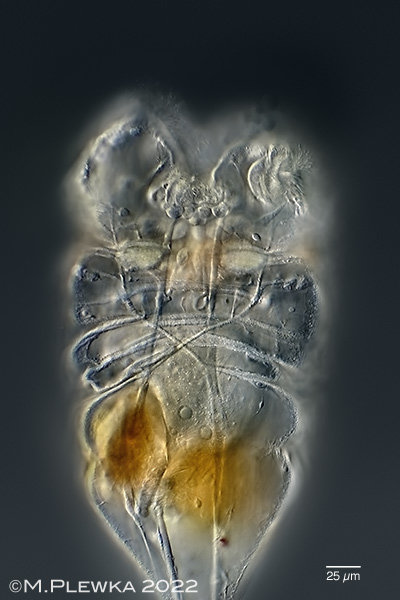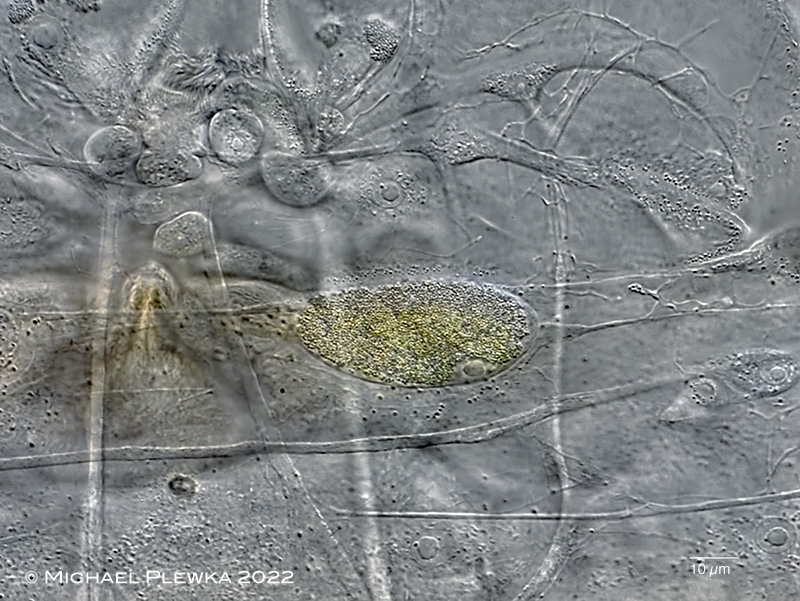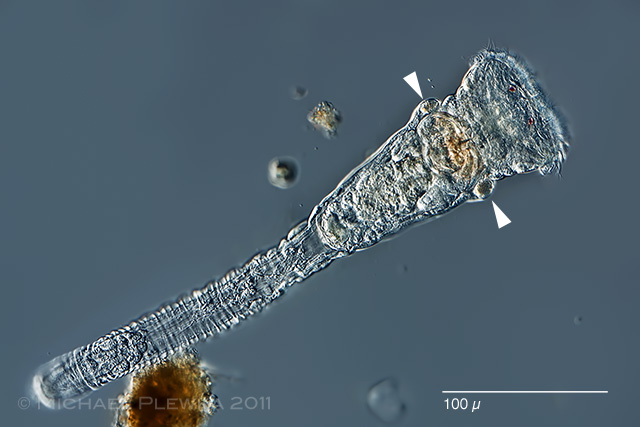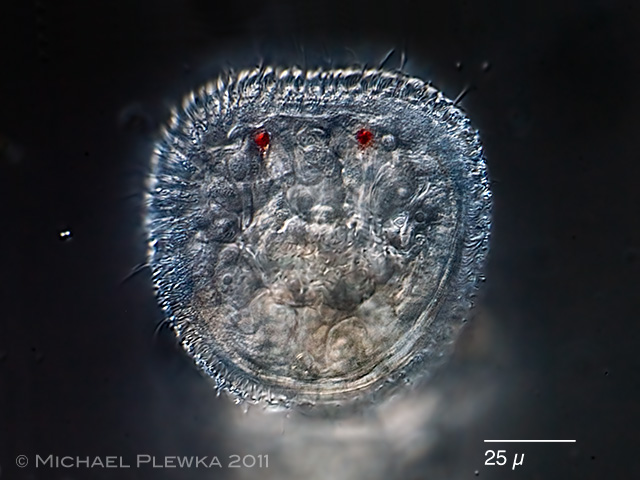| Sinantherina socialis (single whirling specimen) can be easily recognized by the wart-like protuberances (arrowheads) posterior of the corona. (2) . |
| |
 |
| Sinantherina socialis; corona. (2) |
| |
 |
| Sinantherina socialis; part of the corona and oral region, ventral view. The plane of focus of this image is on the cilia of the cingulum (Ci), which beat in such a way that the food particles are moved towards the mouth (M) and mastax (Mx). The green arrows in the green line mark the direction of the metachronal movement of the trochal cilia (tr) which is clockwise in this perspective. This apparent clockwise direction of "rotation" results from the inclination of the corona in the dorsal direction. However, if one takes into account the morphological longitudinal axis of this rotifer (see dotted libe in the image below), the metachronous movement of the trochal cilia observed from a frontal view of this longitudinal body axis results in the opposite, i.e. counter-clockwise direction. (2) |
| |
 |
Sinantherina socialis; lateral view of specimen with expanded corona (optical longitudinal median section). The pink dotted line marks the longitudinal body axis (after Remane 1933). Intuitively, one would interpret the corona as a food funnel (like for example in Colletheca-rotifers), in the centre of which the entrance to the mouth could/would be located. But with flosulariid rotifers this is not the case: the mouth is outside the "funnel" on the ventral side (indicated by the white arrow). The greenish arrow indicates the direction of view of the upper images of the corona; the pink arrow indicates the direction of view if one were to look at the corona from the front (as indicated by the boda axis). The direction of metachronous cilia movement is then counter-clockwise. Ci: (cilia of the) cingulum; D: dorsal side; F: foot; Mx: mastax; St: stomach; Tr: trochus. (2) |
| |
  |
| Sinantherina socialis; anterior part; different focal planes. Left: some of the ventral retractor muscles. (2) |
| |
 |
| Sinantherina socialis; detail of one of the "warts". (2) |
| |
| |
 |
| |
| Sinantherina socialis (swimming single specimen) can be easily recognized by the wart-like protuberances (arrowheads). (1) |
| |
 |
| Sinantherina socialis , same specimenas above. (1) |
| |
 |
| Sinantherina socialis , focal plane on the corona. The red eyespots disappear when the animal is adult. (1) |
| |
| |
| |
| |
|
|
| |
| |
| |
| Location (1): Zaanse Schans, Netherlands, artificial water basin |
| Habitat (1): plankton |
| Date (1): 28.04.2011 |
| |
|
|